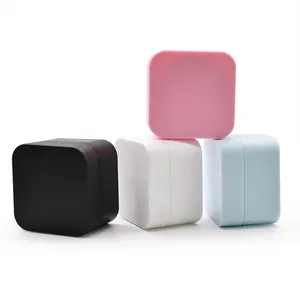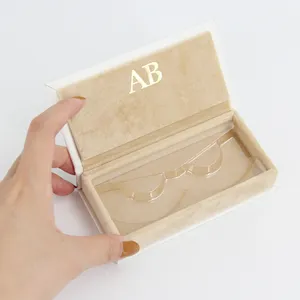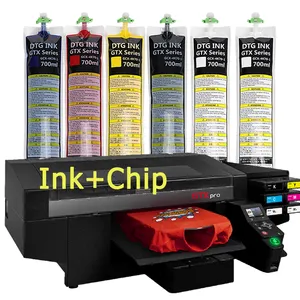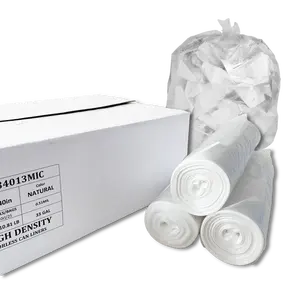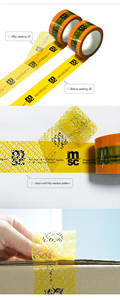Popular in your industry
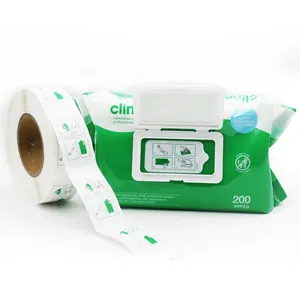





Custom Printing Wet Wipes Pack Sticker Label Waterproof Tissue Private Labels Adhesive Stickers
$0.01
Min. Order: 50000 pieces
5.0/5.0 (1)













The Anti-counterfeiting Invisible Security QR Code Sticker Rainbow Effect Custom Hologram Sticker
$0.01 - $0.08
Min. Order: 5000 pieces
4.5/5.0 (2)·"impeccable service"






Custom Printing Waterproof Vinyl Stickers Die Cut Label Logo Stickers Adhesive PET Label Sticker
$0.02 - $0.08
Min. Order: 500 pieces
5.0/5.0 (11)·"Professional Service"













40pcs/1lot Kawaii Scrapbook Sticker Pet Confidential Scrapbooking Supplies Planner Decorative Craft Stationery Sticker4.5/5.0 (6)·"Fast delivery"
Ready to Ship
$0.54 - $0.60
Min. Order: 20 packs
Shipping per piece: $0.91






Custom-made Security Stickers for High Confidential Products
$0.014 - $0.035
Min. Order: 2000 pieces
5.0/5.0 (1)·"Amazing service"





Warranty sticker void if tampered warranty sticker void if Tamper Evident Security Void Packaging Confidential Tape
$0.02 - $0.31
Min. Order: 500 pieces
5.0/5.0 (3)





Popular Adhesive Peel Away Patient Sign in Forms Approved and Compliant for Confidentiality in All Medical Office
$0.10 - $0.30
Min. Order: 1000 sheets
4.8/5.0 (32)·"customer service"





Anti-Tamper PVC Security Tape for Packing Void Leaves when Tore Off Use on Photo Frame 'Do Not Open Move Sticker'4.9/5.0 (12)·"fast service"
Ready to Ship
$3.85 - $4.20
Min. Order: 1 piece
Shipping per piece: $7.86






Waterproof security void tapes tamper proof seal warranty sticker void for confidentiality
$0.20 - $0.50
Min. Order: 10000 pieces
4.9/5.0 (29)·"customer service"





Food Product Adhesive Sticker Labels Bottle Sticker Flexo Print Soy Sauce Paper Label
$0.03 - $0.10
Min. Order: 500 pieces
0.0/5.0 (0)





Best Selling Patient Sign in Forms with Peel Away Adhesive Labels Approved and Compliant for Confidentiality
$0.10 - $0.30
Min. Order: 1000 sheets
4.8/5.0 (32)·"customer service"





Custom Daily Chemical Perfume Bottle Label Sticker Printing Waterproof Vinyl Glass Bottle Label
$0.03 - $0.10
Min. Order: 500 pieces
0.0/5.0 (0)





Warranty sticker void if tampered warranty sticker void if Tamper Evident Security Void Packaging Confidential Tape4.9/5.0 (12)·"fast service"
Ready to Ship
$3.80 - $5.00
Min. Order: 1 piece
Shipping per piece: $7.88




Hybsk Access is Forbidden Stokers Unauthorized People Warning Stickers 2"x2" 500 Total Per Roll4.8/5.0 (5)·"fast delivery"
Ready to Ship
$2.40 - $3.20
Min. Order: 5 rolls
Shipping per piece: $4.36





Customized sandalwood name seal private seal confidential private name engraved seal
$10.80 - $11.80
Min. Order: 1 piece
5.0/5.0 (1)·"Good job"



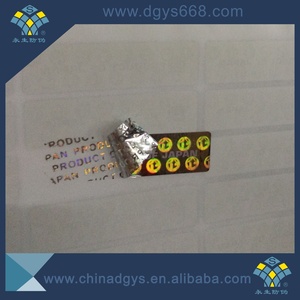

Confidential Packing Lock tags Hologram Stickers Print
$0.03 - $0.48
Min. Order: 2000 pieces
5.0/5.0 (1)·"Amazing service"











Lange Ceramic Magnetic Poker Chip Personalize Security Poker Chip with Golden Trim Sticker
$0.33 - $0.80
Min. Order: 1000 pieces
4.8/5.0 (16)·"Excellent service"





Customized Easy to Tear Thick Logistics Express Seal Blank A4 Contract Document Confidentiality Envelope Packaging Paper Bag
$0.03 - $0.05
Min. Order: 10000 pieces
5.0/5.0 (1)





Home Building Insulation Light Control Privacy 99% Anti-UV Film High Heat Rejection Inside Stickers Glass Film IR Rejection 95%
$19.80
Min. Order: 300 square meters
0.0/5.0 (0)





Custom Denomination Oversized Poker Chips Baccarat Laser Sticker Poker Chips
$0.65 - $1.10
Min. Order: 1000 pieces
4.8/5.0 (16)·"Excellent service"





Customized easy to tear thickened printed document seal blank contract document confidentiality envelope packaging paper bag
$0.03 - $0.05
Min. Order: 10000 pieces
5.0/5.0 (1)



14 Gram Casino ABS Plastic Roulette Poker Chip with Custom Sticker Inlay
$0.05 - $0.10
Min. Order: 10000 pieces
4.8/5.0 (16)·"Excellent service"




14g Two Tone Blank Clay Poker Chip Custom Sticker Chip
$0.10 - $0.70
Min. Order: 500 pieces
4.8/5.0 (16)·"Excellent service"





14.5g Three Tone Casino Chips Quality Customized Logo UV Sticker Poker Chips
$0.45 - $0.79
Min. Order: 1000 pieces
4.8/5.0 (16)·"Excellent service"





Factory Create Two Tone Poker Chips Big Sticker Junket Chips Clay Poker Chip
$0.11 - $0.28
Min. Order: 1000 pieces
4.8/5.0 (16)·"Excellent service"




Casino Clay Poker Chips, Guangzhou Factory Clay poker chip
$0.05 - $0.30
Min. Order: 1000 pieces
4.8/5.0 (16)·"Excellent service"





Luxury Poker Chips Roulette Games Card Mold Carved Blank Ceramic Poker Chip
$0.19 - $0.29
Min. Order: 1000 pieces
4.8/5.0 (16)·"Excellent service"





Lange Factory Mold Poker Chip Entertainment Promotional Texas Hold'em Poker Chips
$0.15 - $0.35
Min. Order: 1000 pieces
4.8/5.0 (16)·"Excellent service"





Lange 14g Casino Quality Poker Chips Baccarat Gaming Poker Chip Custom Made
$0.52 - $0.85
Min. Order: 1000 pieces
4.8/5.0 (16)·"Excellent service"





Casino Professional Keramik Poker Chips 14g Roulette Coin Plate Poker Chip
$0.15 - $0.22
Min. Order: 1000 pieces
4.8/5.0 (16)·"Excellent service"Top categories
About confidential sticker
69 confidential sticker products are offered for sale by suppliers on Alibaba.com, of which packaging labels accounts for 21%, decorative stickers accounts for 4%.
A wide variety of confidential sticker options are available to you, such as essential oil, photo frame and promotion.You can also choose from custom sticker, shipping labels and bottled beverage confidential sticker,as well as from chemical confidential stickerAnd whether confidential sticker is acrylic, {2}, or {3}.
